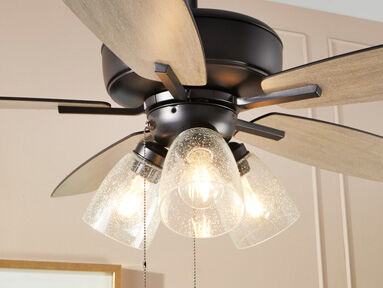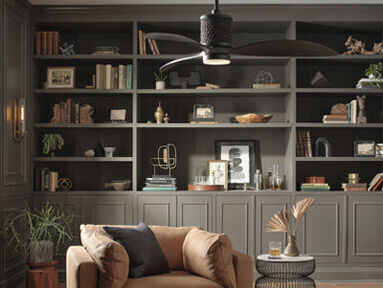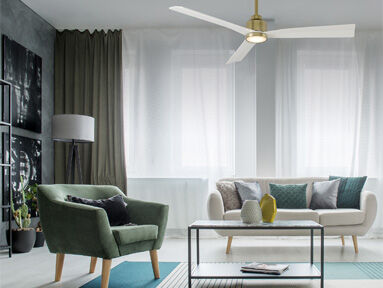Selecting a Ceiling Fan
Master the Most Important Factors
Ceiling fans make an aesthetic statement and provide physical comfort in your home. Therefore, selecting one should be a fun, but well-thought out experience. Take into consideration the following when exploring the right fixture:
• What part of the home are you shopping for?
• What are the dimensions of that space?
• What kind of style are you aiming for?
Lucky for you, we’ve developed a simple guide to select the very best ceiling fan for your space, so that your time spent shopping is nothing but a breeze and you can be proud of the space you create!

1. Location
Inside? Outside? Under cover? Wet rated fans are a must in any area exposed to the elements. Spaces like covered porches and sunrooms are best served by outdoor fans when condensation and high humidity are factors. Wet rated fans can be used inside as well, but indoor-only fans can’t play outside.

2. Style
Narrow your search by finding fans that complement your home décor. Go for modern if a streamlined look is more your style or check out traditional fans if they best suit your space. From island-inspired to mid-century, there are fans with plenty of finish and blade options to fit your vibe.
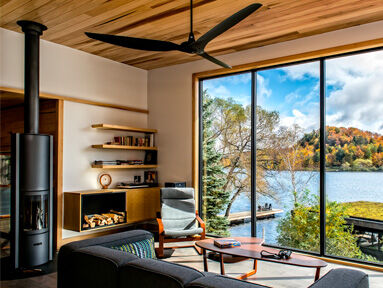
3. Size
Choosing the right size fan is important. A fan that is too large can overpower a room, and too small will not circulate enough air. These guidelines will help:
Small Rooms: 100 sq. ft. or less | Fan Size: 30”-42” diameter
Ideal for home offices, laundry rooms, hallways
Medium-Large Rooms: 400 sq. ft. or less | Fan Size: 43”-54” diameter
Ideal for living rooms, bedrooms, kitchens, patios
Great Rooms: Over 400 sq. ft. | Fan Size: 56” or larger diameter
Ideal for open-concept living areas or lofts
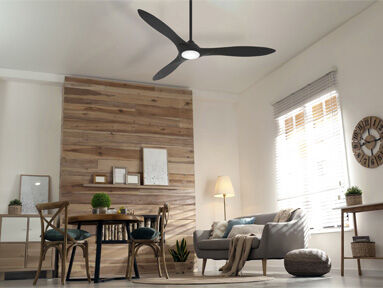
4. Airflow
CFM is the magic acronym needed to achieve the optimum airflow output of a fan. It also calculates the operating cost and energy expenditure of your fan. So what actually is CFM?
• The velocity of airflow, measured in Cubic Feet per Minute.
• If you want great airflow, look for a fan with a CFM rating of 5,000 or higher.
More is better when you're speaking ceiling fan CFM.
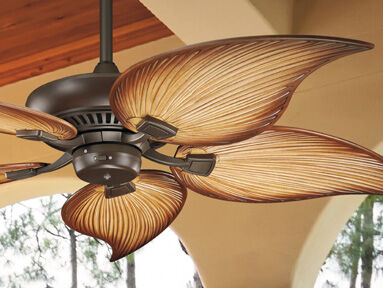
8. Customize
Fans are cool because you can customize both aesthetic and operational elements. If you are the kind of person who rearranges your furniture and swaps out throw pillows seasonally, look for fans with reversible blades. If creating a connected home is at the top of your to-do list, check out the many options for controls.
Time to Get Started!
Upgrade your home inside and out with efficient ceiling fan designs that offer a comforting airflow year round.
You'll be happy you did and proud of the space you create. Guaranteed.
If you have questions or need assistance, speak to a Lighting Expert today at 866.344.3875, and begin your customized lighting and fan project with world-class service!
